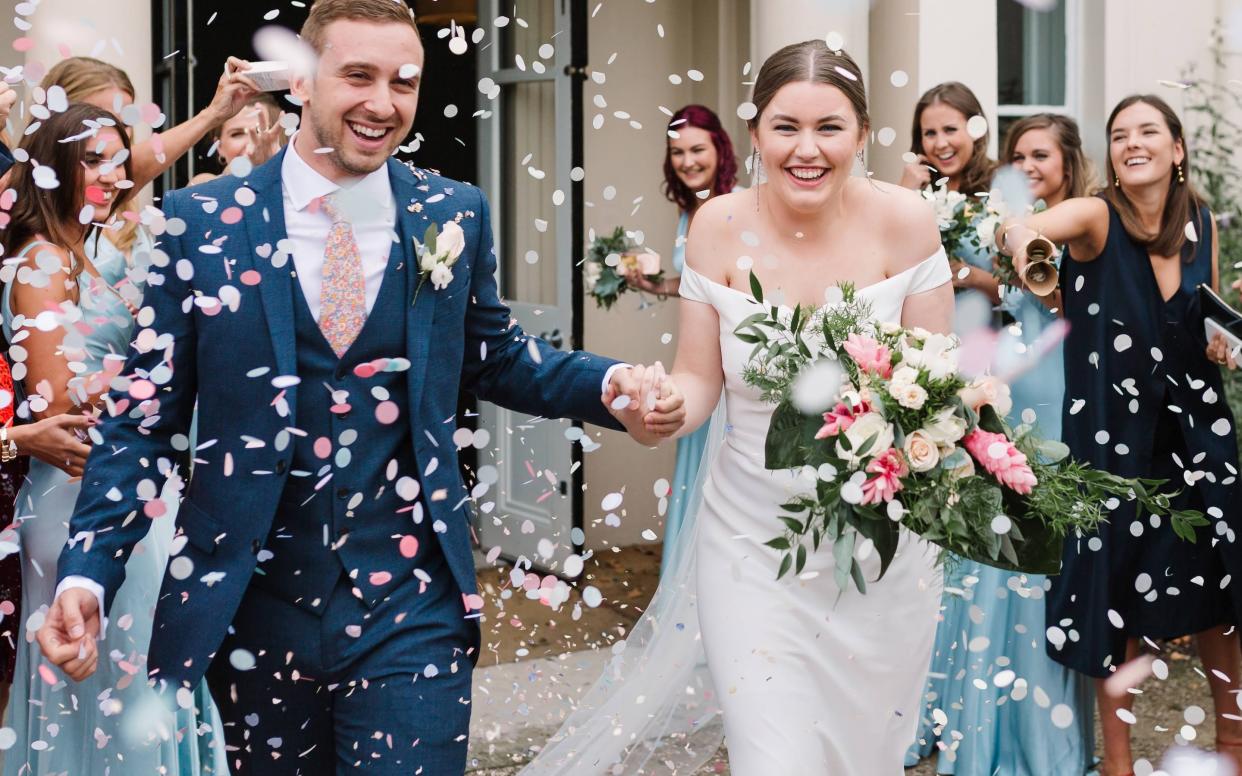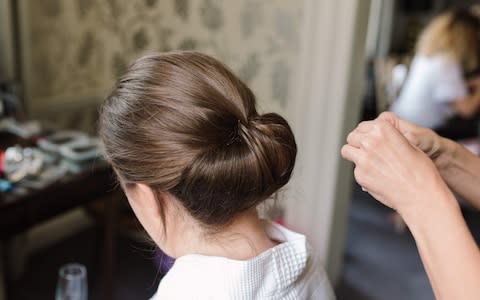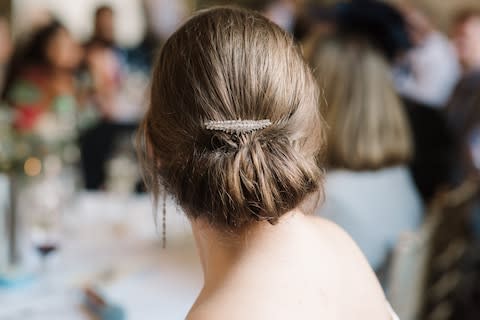How to choose the right bridal hairstyle for you, and your dress

When it came to deciding how I wanted my hair to look for my wedding day in September 2018, I was a bit clueless. I’d got the dress (an off-the-shoulder Alexander McQueen cady gown that was clean of embellishment) but for some reason the hair thing was proving to be a bigger point of contention.
For a lot of women, having your bridal hair done is a strange experience. You are about to be immortalised in your wedding photographs, you’re wearing, hopefully, the best outfit you’ll ever wear, and you need your usually-quite-flat, frizzy or lank hair to zhuzh itself up and play the part comfortably.
Such pressures often prompt panic, or wild ideas about spontaneous dye jobs, enormous up-dos, or overly embellished fishtail plaits - none of which you’ve ever even considered trying before.
For me, the idea to try something new and look ‘special’ really did appeal. But I was talked off the cliff edge by Marléne Andersson, the hairstylist who, since 1992, has helped hundreds of brides to settle on a look that is polished, detailed and exciting, but, crucially, still them.
Here, she shares her seven tips for finding the right bridal hairstyle for you...
1. First know your hairstyle signatures
Something that Andersson pointed out to me as soon as I initially emailed her was that my hair is centre-parted 90% of the time. She had looked at my Instagram page to see what pictures of myself I had previously posted, and clearly liked, in my normal, non-bridal life.
“You have to be able to look in the mirror, or look back at the photos, and recognise yourself,” she explains. “For you, that parting is your constant thing, so it had to stay. Also look at your face shape; wide faces don’t want lots of volume at the sides, long faces don’t want too much height on the top. Many brides dye their hair a bold new colour or have a fringe cut, just for the day, and then regret it. You need to be comfortable and if in doubt, stick to something classic.”
You might be able to solve the whole 'up or down' dilemma, just by going back to basics and thinking about which you tend to wear the most comfortably on a normal day.

2. Then, look on Instagram
Look at yourself before you start to look on social media for inspiration, advises Andersson. “You need to look for pictures of brides with a similar hair type to your own,” she says. “It’s brilliant for people to gather lots of ideas, but you need to be realistic about what this might look like when it’s done with your hair texture and colour. This is where the trial is essential as it helps you to see the reality of what something looks like on you. Your hair could be thinner than the person in the picture, who has managed to achieve an elaborate up-do, or it might be thicker or prone to frizzing.”
3. Consider your neckline
“The right hairstyle also depends on the dress’s neckline,” explains Andersson. “If you have a bodice in a plain or satin material, or a strapless dress with no fabric around the neck, then it’s fine to have the hair up or down because it will be swishing over it. If there is lace, sequins, embroidery or other embellishment in the area, though, then this will catch if the hair is down. It will likely make you fuss with your hair more during the day - you need to decide if you’re comfortable. I would also say that you need to think of the back as well as the front of the dress; you might want people to see the detail on the back of the gown.”

4. Balance the overall look
“With a wedding look there is so much else going on - dress, makeup, jewellery - that it can be really helpful to take a step back and think about the overall look,” Andersson considers. “A busy veil with lace and sparkle might need a more simple style underneath. A massive hair do with a massive veil is great, but its a look that works best with a huge dress and a huge venue.”
For me, with a dress that was clean of embellishment, I knew that I could afford to add a longer, but not overly embellished, veil and larger earrings, plus an up-do with a small twist. “The size of the dress is important,” says Andersson. “If it’s a big skirt then you can take a lot more on your head, at the top, to balance it out, as a small hairstyle would make the person disappear. A slinky, figure-hugging dress might need a tighter hair style. All the elements should work together.”

5. Do accessorise
I was particularly keen to avoid hair accessories on my wedding day, but Andersson convinced me otherwise, and I’m glad she did. I swapped my veil for a small, Jon Richard, comb ahead of the evening reception. “That’s the easiest way to make it look more bridal,” she says. “It could be a flower, a pearl hair clip, anything, but it just adds that touch to show that it’s finished.”
6. Let the bridesmaids follow your lead
“Bridesmaids should never outdo the bride and that includes the hair styles,” says Andersson. “So often we see bridal parties with tightly curled up-dos and lots of hair spray, while the bride has soft waves. It looks odd, I think. The bride always needs to set the tone and the bridesmaids should complement the overall feel.”

7. Do your security checks
“Big hairdos are typically less secure, than small ones - more can go wrong,” Andersson says. Before she sent me down the aisle, I had to pass her ‘shake test’. “You need to throw your head around a little bit to see if it’s moving or you need more grips.

 Yahoo News
Yahoo News 
